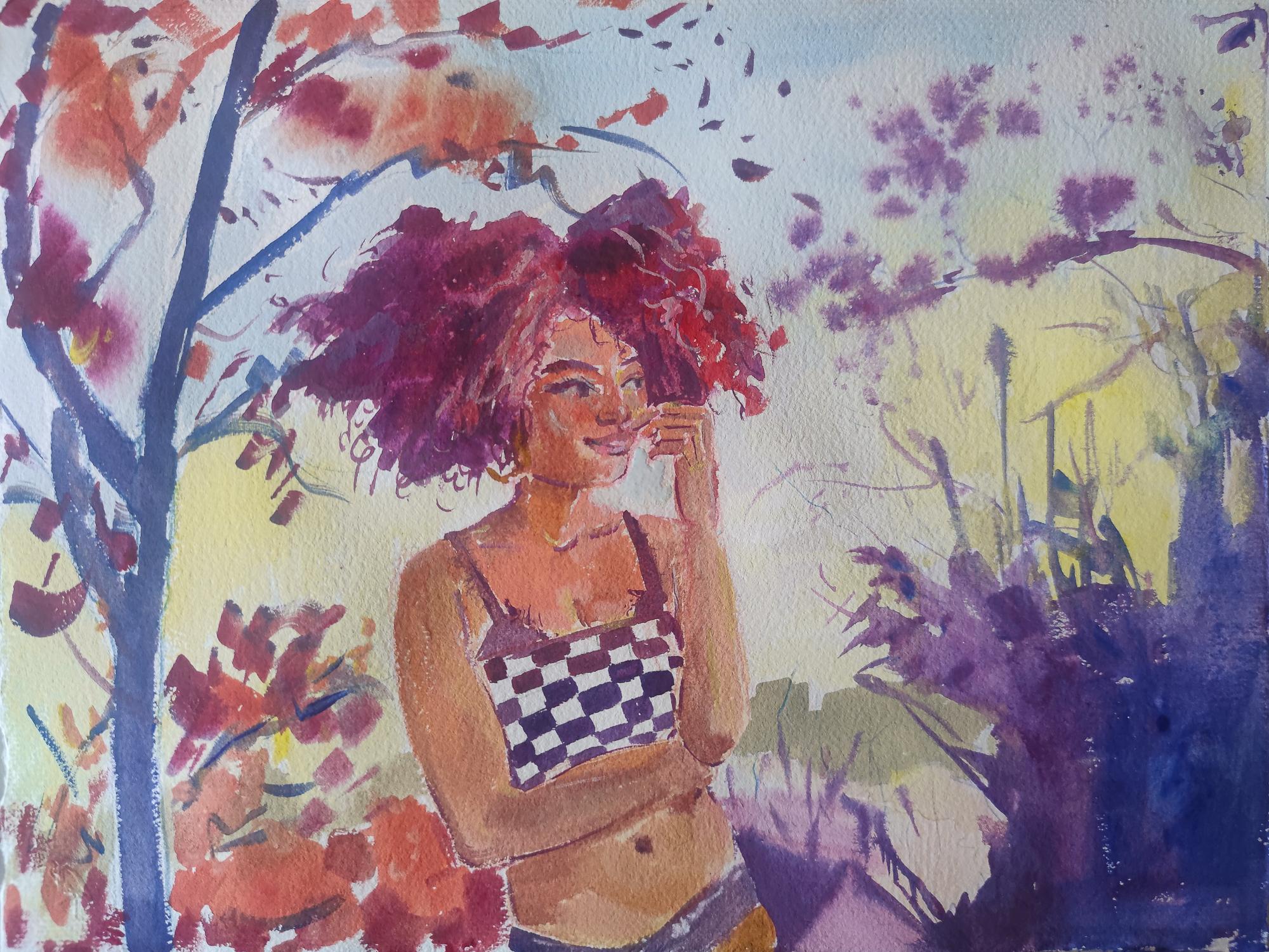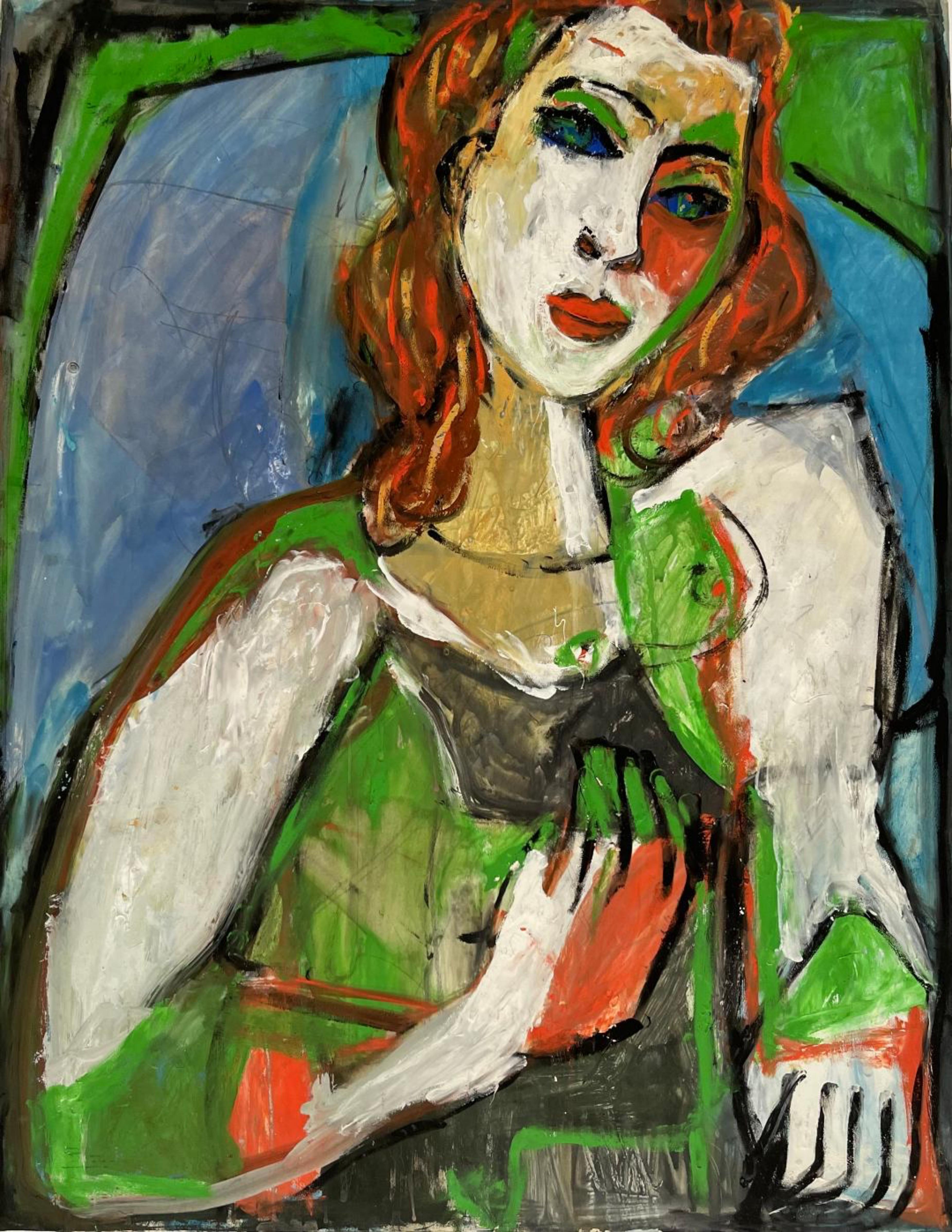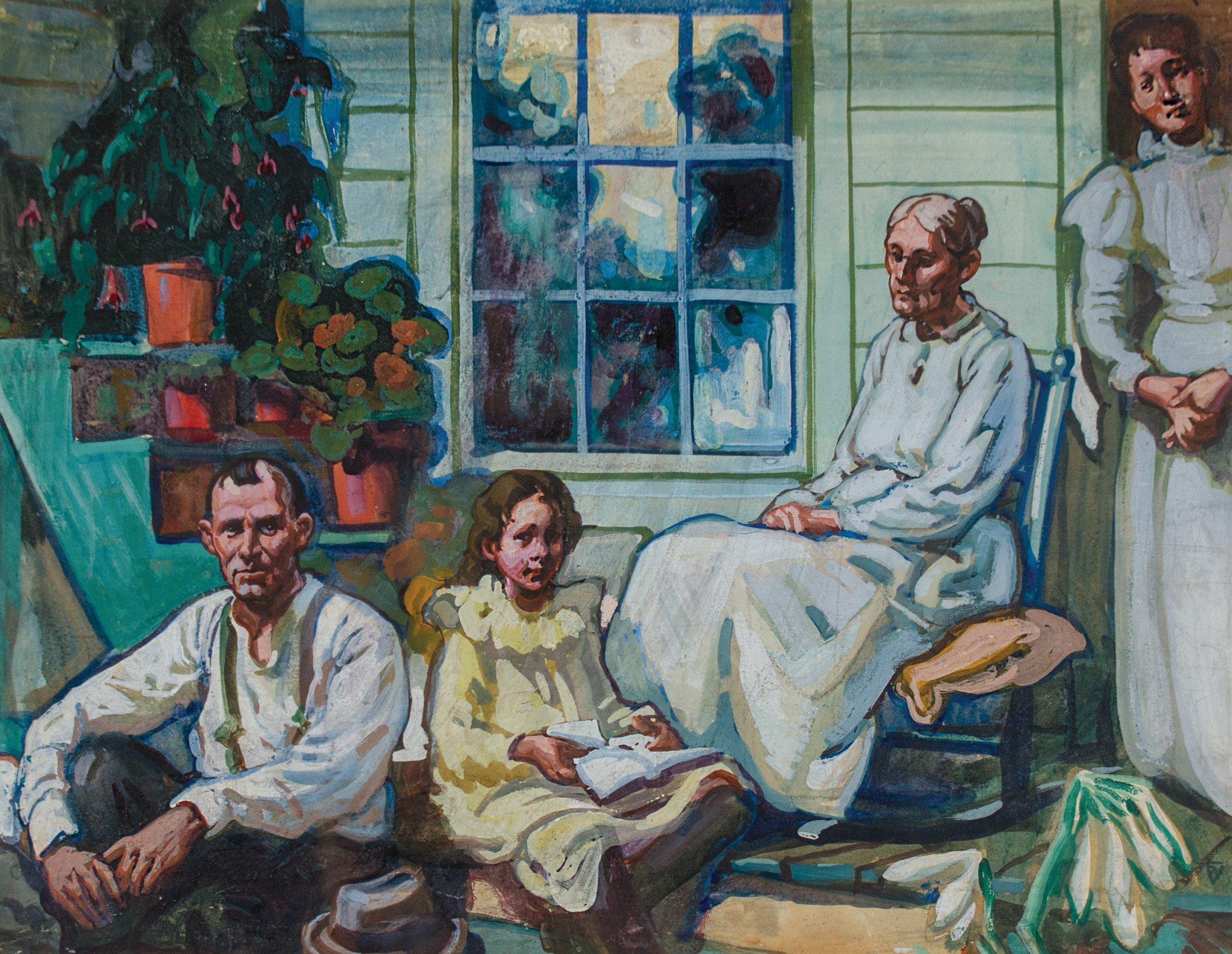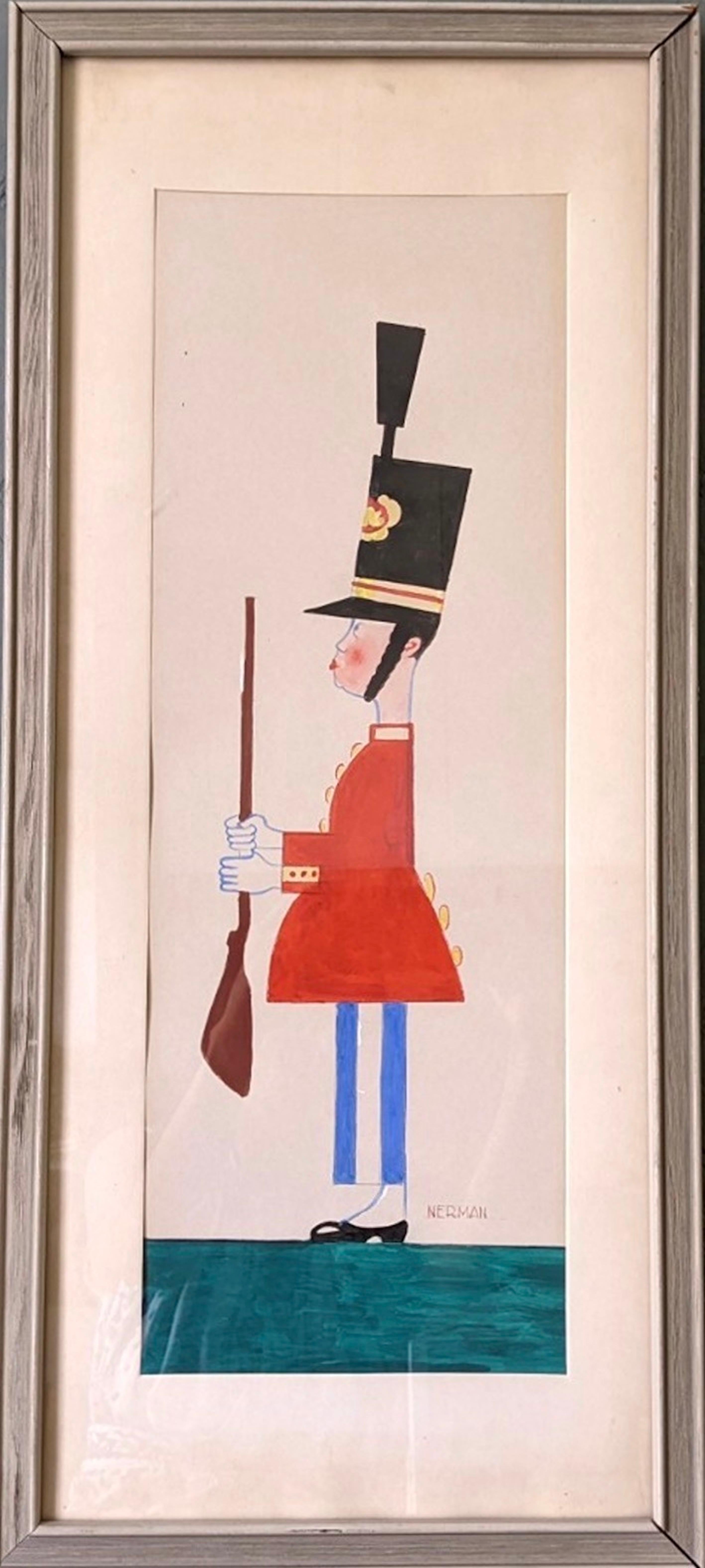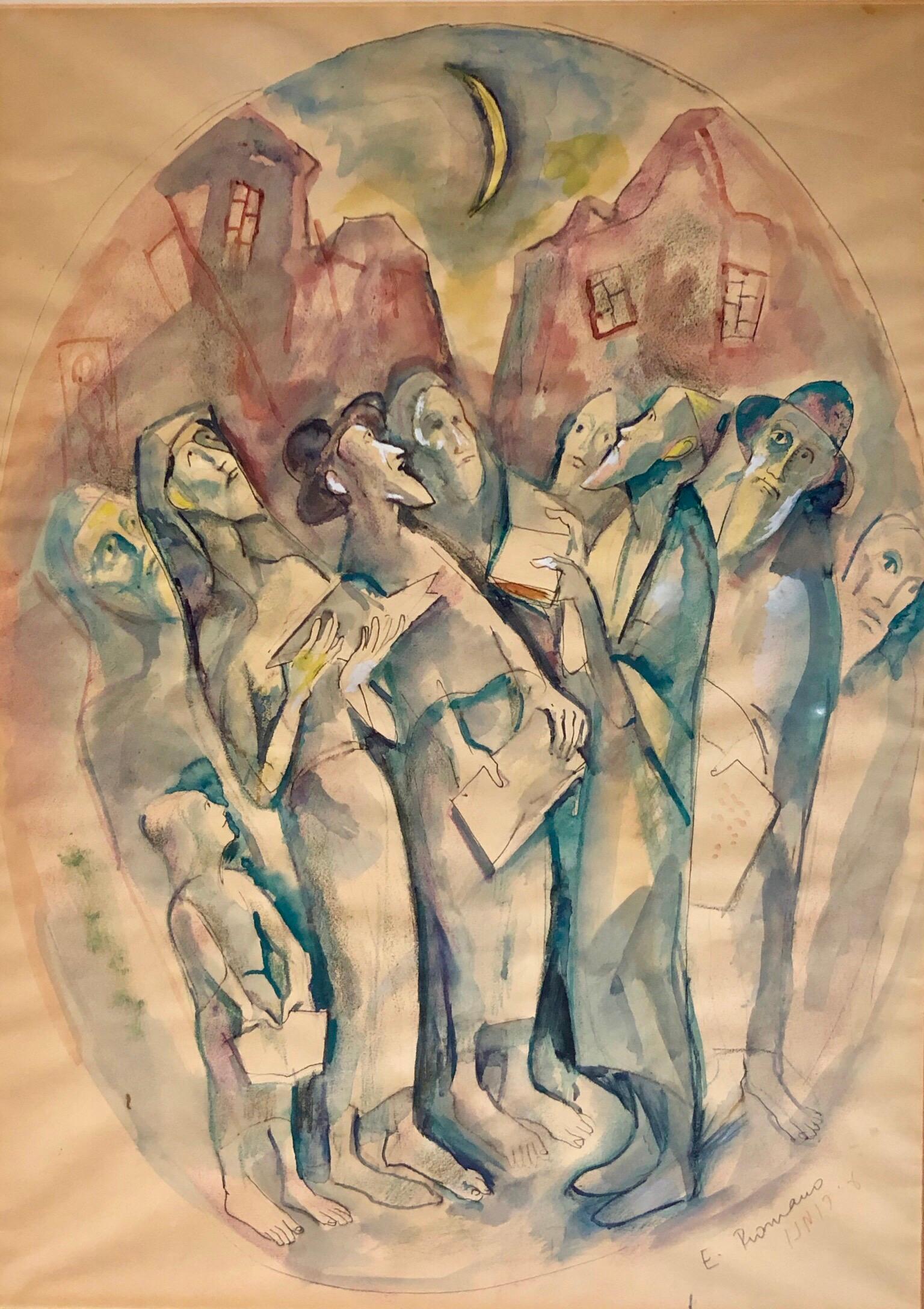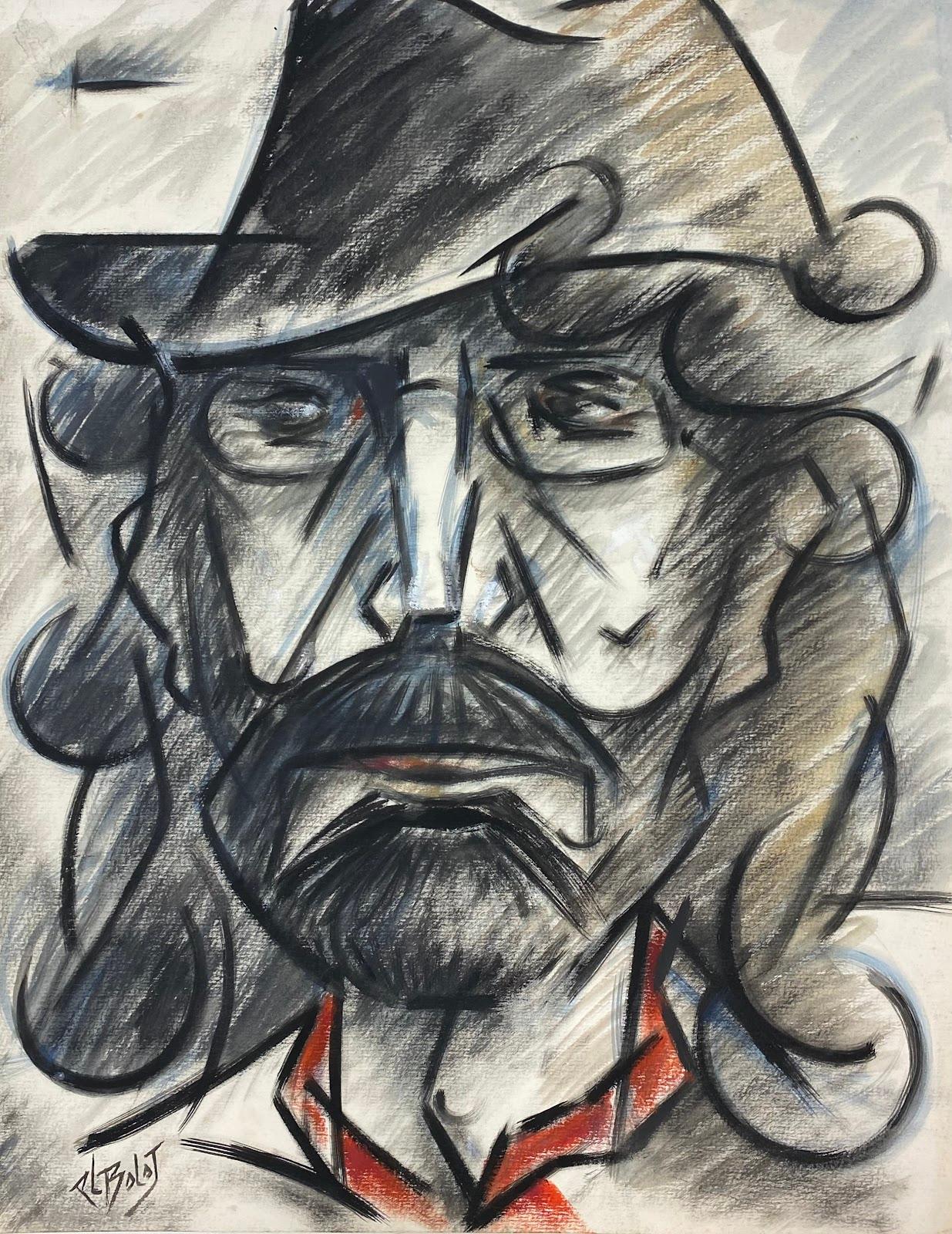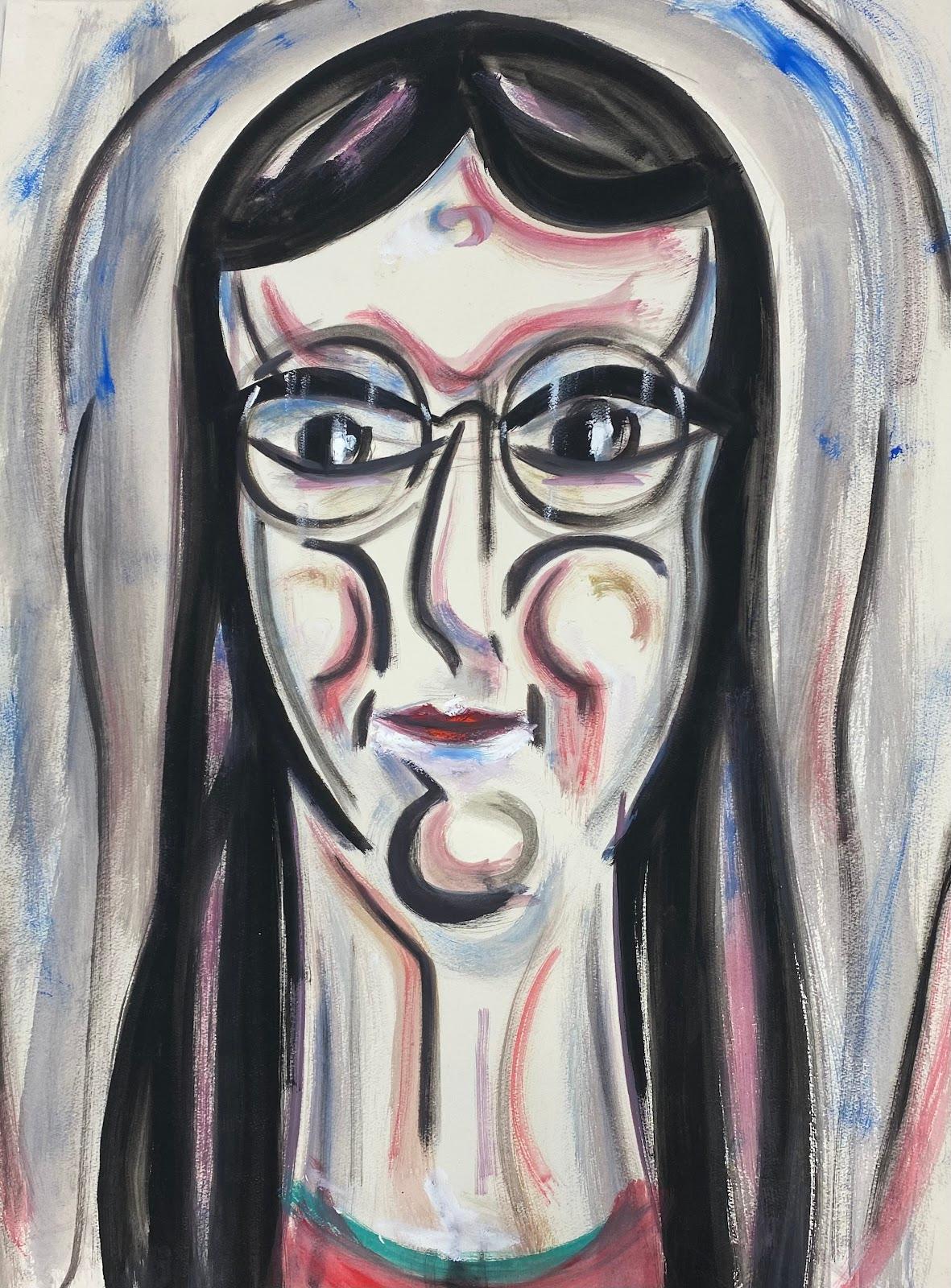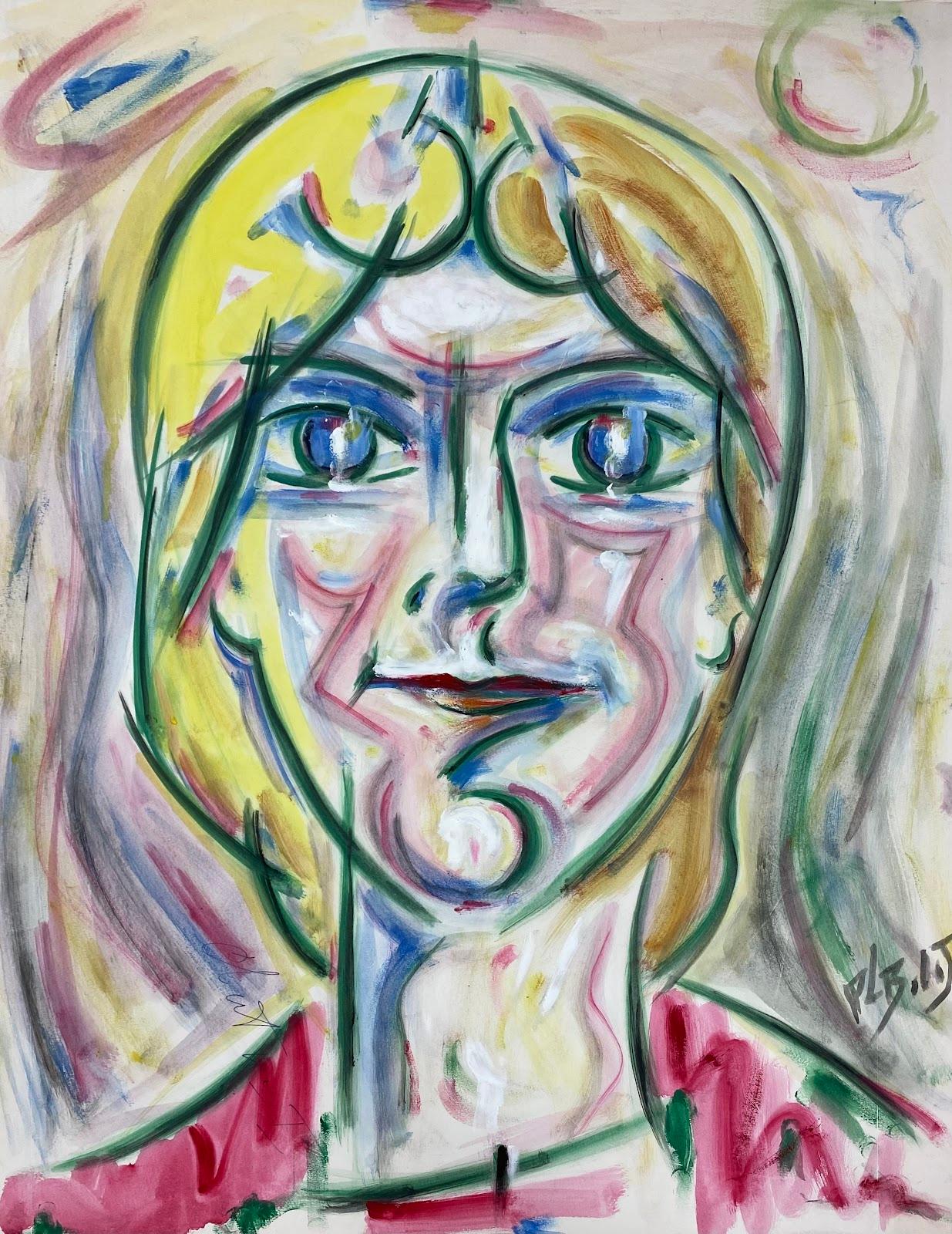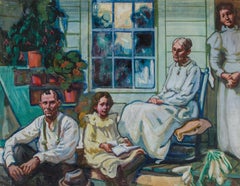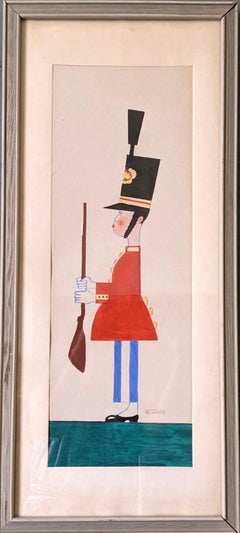
Smoking, watercolour, pin up, tattoo, modern, 21st century, portrait,
View Similar Items
1 of 4
Chris GuestSmoking, watercolour, pin up, tattoo, modern, 21st century, portrait,2018
2018
About the Item
- Creator:Chris Guest (British)
- Creation Year:2018
- Dimensions:Height: 22.84 in (58 cm)Width: 13.39 in (34 cm)
- Medium:
- Movement & Style:
- Period:
- Condition:
- Gallery Location:Munich, DE
- Reference Number:1stDibs: LU106714052902
You May Also Like
- Early two sided figurative painting with separate portraits by renowned painterBy Alfred JensenLocated in New York, NYAlfred Jensen Untitled two sided painting, 1947 2-sided gouache painting on board (one portrait is vertical; the other horizontal) 29 × 23 7/20 inches Signed and dated in paint on th...Category
Mid-20th Century Modern Portrait Paintings
MaterialsOil, Gouache
- On the Back Porch, Brecksville, Ohio, Early 20th Century Cleveland SchoolBy Frank WilcoxLocated in Beachwood, OHFrank Nelson Wilcox (American, 1887-1964) On the Back Porch, Brecksville, Ohio, c. 1922 Watercolor on paper Monogram lower right 21.5 x 27. 5 inc...Category
1920s American Modern Figurative Paintings
MaterialsWatercolor
- Vintage Mid-Century Modern Figurative Portrait Framed Painting, The Royal GuardLocated in Bristol, GBTHE ROYAL GUARD Size: 63 x 29 cm (including frame) Watercolor & Gouache on Paper A small yet impactful watercolour and gouache figurative composition of an upright figure of a royal...Category
1950s Modern Figurative Paintings
MaterialsPaper, Watercolor, Gouache
- Summer JoyLocated in THOMERY, FRThis gouache on paper takes up the themes dear to Linda CLerget: femininity, nature and joy. Here, the colors shift from orange to violet, and the young girl's hair blends with the o...Category
21st Century and Contemporary Modern Portrait Paintings
MaterialsGouache
- Modernist Watercolor Painting Judaica Kiddush Levana Blessing New MoonBy Emanuel Glicenstein RomanoLocated in Surfside, FLGenre: Judaic prayer scene Subject: Landscape Medium: watercolor Surface: Paper Country: United States EMANUEL ROMANO Rome, Italy, b. 1897, d. 1984 Emanuel Glicenstein Romano was born in Rome, September 23, 1897. His father Henryk Glicenstein was a sculptor and was living in Rome with his wife Helena (born Hirszenberg) when Emanuel was born his father obtained Italian citizenship and adopted the name Enrico. Emanuel was brought up in Italy, Switzerland, Germany, England and Poland. In 1926 Emanuel and his father sailed for New York. They briefly visited Chicago. Romano's sister, Beatrice, and mother only joined them in New York years later. Romano changed his name on his arrival to America and some have erroneously speculated that this was to avoid antisemitic anti Jewish discrimination. In truth, as the son of a highly-regarded artist, Romano changed his name to ensure that any success or recognition he would later attain, would be the result of nothing other than his own merit as an artist, and not on account of his father's fame. In 1936 Romano was worked for the Federal Art Project creating murals. During and immediately after World War II, Romano created a series of allegorical works depicting graphic holocaust images that were held closely by the family until after his passing. One of these works is now on permanent display in the Florida Holocaust Museum in St. Petersburg Florida. Emanuel's father died in 1942 in a car accident before they could realize their shared dream of visiting Israel. In 1944 Romano, having completed his degree at the Pennsylvania Academy of Fine Arts and the Art Institute of Chicago, began teaching at the City College of New York. Romano moved to Safed, Israel in 1953 and established an art museum in his father's memory, the Glicentein Museum. COLLECTIONS Indianapolis Museum of Art Metropolitan Museum of Art Boston Fine Arts Museum Fogg Museum Musée Nacional de France Recently his work has been added to the Florida Holocaust Museum collection. His notable works include his holocaust themed allegorical paintings as well as portraits of Marianne Moore, his father and William Carlos Williams...Category
20th Century American Modern Figurative Paintings
MaterialsPaper, Watercolor
- 1939 Mexican Farm Worker WPA Artist Adolf Dehn American Modern Gouache PaintingBy Adolf DehnLocated in Surfside, FLADOLF ARTHUR DEHN (American, 1895-1969) Portrait of Mexican Man with Agave Cactus plant, 1939, Gouache Painting Hand signed and dated '39 lower left. Whitney Museum of American Art, N.Y. Label verso sight: 20.5 in. X 15 in. Frame is 32 X 24 inches This was subsequently made into a lithograph in 1941 titled Man From Orizaba Standing in the foreground of an agave field is man wearing a straw hat, a white button up collared shirt, white pants and sandals. The man has shaggy black hair, a beard and moustache and large eyes. His right hand is clenched as if holding something and his left hand is open holding some flower-like objects. He stands in the middle of a large agave plant that expands the width of the composition. In the middle ground are large agave plants in subsequent rows. Behind the agave plantation is a mountain range with snow covered peak on the right hand side. Above the mountain range is a partially cloudy sky. Adolf Dehn (November 22, 1895 – May 19, 1968) was an American artist known mainly as a lithographer. Throughout his artistic career, he participated in and helped define some important movements in American art, including regionalism, social realism, and caricature. A two-time recipient of the Guggenheim Fellowship, he was known for both his technical skills and his high-spirited, droll depictions of human foibles. Dehn was born in 1895 in Waterville, Minnesota. He began creating artwork at the age of six, and by the time of his death had created nearly 650 images. Dehn went to the Minneapolis School of Art (known today as the Minneapolis College of Art and Design), where he met and became a close friend of Wanda Gag. In 1917 he and Gág were two of only a dozen students in the country to earn a scholarship to the Art Students League of New York. He was drafted to serve in World War I in 1918, but declared himself a conscientious objector and spent four months in a guardhouse detention camp in Spartanburg, SC and then worked for eight months as a painting teacher at an arm rehabilitation hospital in Asheville, NC. Later, Dehn returned to the Art Students League for another year of study and created his first lithograph, The Harvest. In 1921 Dehn's lithographs were featured in his first exhibition at Weyhe Gallery in New York City. From 1920 to 1921 in Manhattan, he was connected to New York's politically left-leaning activists. In 1921, he went to Europe. In Paris and Vienna he belonged to a group of expatriate intellectuals and artists, including Andrée Ruellan, Gertrude Stein, and ee cummings...Category
1930s American Modern Figurative Paintings
MaterialsGouache
